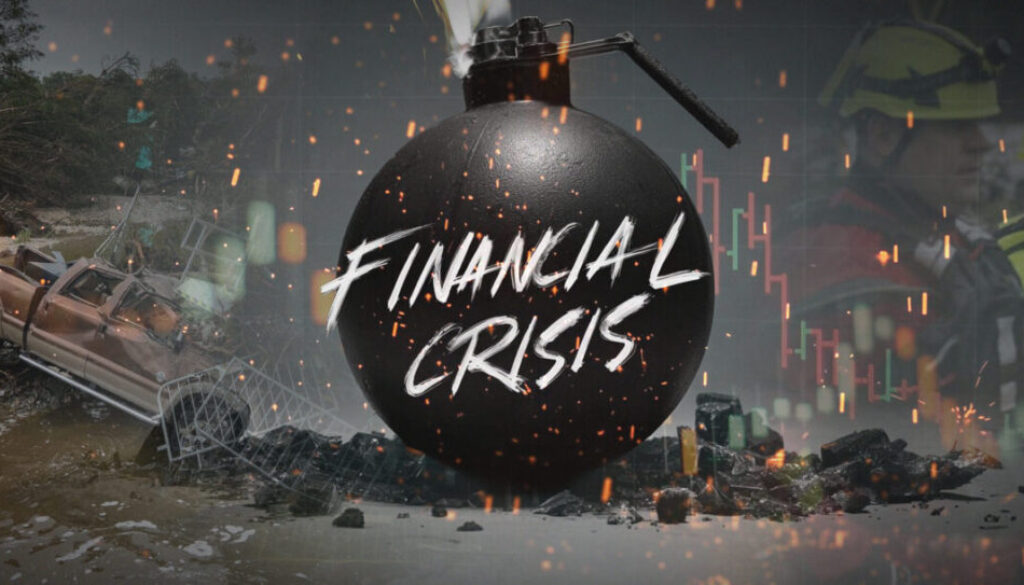Could the insurance industry trigger a new financial crisis?

A series of alarming reports and dire headlines have raised the specter of a new financial crisis — this time triggered not by banks or exotic securities, but by the insurance industry.
Climate change is the ultimate bugaboo, but soaring insurance premiums, shrinking coverage and insurers retreating from vulnerable regions have left millions of homeowners struggling to secure or afford basic protection. Could this spiral into a systemic threat to the economy?
The dreaded scenario goes like this: As property/casualty insurers continue to retreat from areas considered too risky to insure, property values will fall as more homes and businesses become uninsurable. That, in turn, will reduce property taxes, putting pressure on local governments. Without available insurance, mortgage sales plummet and the housing construction market, already facing rising costs from inflation and tariffs, will collapse. Mortgage failures will increase as people simply walk away from their uninsurable homes, spiking huge banking losses and blighting neighborhoods.
Some experts, such as consumer advocate Douglas Heller, warn that the insurance crisis has already begun to destabilize housing markets and risks tipping into a broader calamity.
“Insurance is kind of the oil that greases the economic engine of homeownership,” said Heller, director of insurance at the Consumer Federation of America. “When insurers pull back, you not only leave families exposed, but you also undermine the mortgage market and the broader economy.”
A ‘more subtle’ path toward disaster
Heller pointed to what he calls a “more subtle” path toward financial disaster. It is not only that some homes become uninsurable, he argued — it is that many policies now offer far less protection than lenders and borrowers believe. As insurers hollow out coverage through higher deductibles, exclusions and actual cash value instead of replacement costs, more homes become underinsured. That is already playing out, he noted, as Fannie Mae and Freddie Mac have eased enforcement of their own insurance standards to avoid mass loan defaults.
Moreover, this underinsurance is not confined to the coastal states commonly associated with climate risk.
“The most expensive homeowner’s insurance in America, after Florida, is in places like Nebraska, Oklahoma and Kentucky,” Heller said, citing billion-dollar hail and wind losses across Tornado Alley. The exposure is so widely distributed, he said, that the risk is systemic, not merely regional.
Indeed, data is already signaling trouble. In Miami, nearly 13% of homes are uninsured, and similar numbers appear in Houston and Detroit.
“You don’t need a hurricane to trigger blight,” Heller said. “A few house fires in uninsured neighborhoods can start the kind of urban flight that devastates communities.”
Insurance regulators are partly to blame
Critics also fault regulators and policymakers for not addressing these trends.
“There’s no question it’s a failure of regulators,” Heller said. “Insurers have become the de facto land use governors of the country, deciding where people can live by deciding where they’ll write policies. Regulators have simply let them walk away from entire communities.”
The first director of the newly established Federal Insurance Office, Michael McRraith, reminded lawmakers as far back as 2014 of the critical relationship of the housing market to the overall economy in testimony before the house Financial Services Subcommittee on Housing and Insurance.
“The [2008-2009] financial crisis demonstrated the importance of the housing finance system to the U.S. national economy,” he said. “Several private mortgage insurers failed or suffered potential financial distress, and the costs of default and foreclosure were shifted to lenders, the government-sponsored enterprises and ultimately the taxpayer.”
The combination of banks being unable to provide funds to businesses, and homeowners paying down debt instead of borrowing and spending, resulted in the Great Recession that lasted 18 months.
Not everyone, however, sees a new looming catastrophe. Federal Reserve Chair Jerome Powell, in testimony to Congress earlier this year, downplayed the systemic risk. While acknowledging the strain on households and regional economies, Powell suggested these are localized issues unlikely to threaten the entire financial system.
Washington pays attention
Some policymakers in Washington have echoed that view. The Fed, under Powell, has dismantled its climate risk infrastructure, withdrawn from the Network for Greening the Financial System, and pushed back on stronger global climate standards. Jayson O’Neill, climate finance senior director of Focal Point Strategy Group, criticized this retreat as “a dangerous abandonment of oversight” in the face of mounting risks.
“The Fed’s position is particularly concerning given the escalating financial costs of climate change, now exceeding nearly $1 trillion annually,” O’Neill said.
Those concerned about systemic risk point to the same mortgage markets that nearly collapsed in 2008. If homeowners cannot secure adequate insurance, lenders may refuse loans or find themselves holding collateral worth less than the outstanding debt. That dynamic threatens not just individual borrowers but the entire housing finance system.
“There’s a scenario here where homeownership becomes an unsustainable feature of the American economy,” Heller warned. “And it won’t just be in Florida or California — it’s happening in the Midwest, in the South, everywhere.”
So what can be done? Heller advocates for stronger regulations to prevent insurers from stripping down policies, for more comprehensive risk pooling to lower costs, and for public investments in mitigation such as better building codes and community resilience. He also calls on insurers to act as partners in risk reduction rather than simply abandoning risky markets.
Some members of Congress agree that intervention is needed. Frederica Wilson and Maxwell Frost, both Democrats representing Florida, have pushed for a federal reinsurance fund to stabilize state markets and keep insurance accessible. Others, however, remain cautious about imposing new regulations on insurers.
For now, the question remains: Is the insurance crisis a slow-moving disaster confined to homeowners and local housing markets, or is it the next systemic shock waiting to happen?
As Heller put it: “We hope we never have to find out. But hope alone is not a plan.”
© Entire contents copyright 2025 by InsuranceNewsNet.com Inc. All rights reserved. No part of this article may be reprinted without the expressed written consent from InsuranceNewsNet.com.
The post Could the insurance industry trigger a new financial crisis? appeared first on Insurance News | InsuranceNewsNet.





